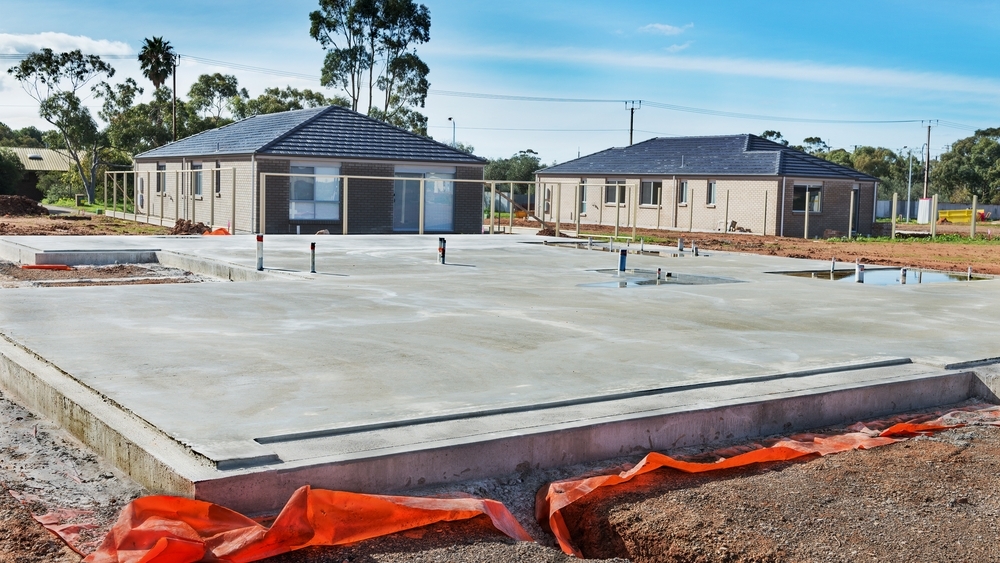The foundation of your home is arguably its most important structural component, since every part of the home depends on it remaining firm and level. Different foundations are available and each is made for certain types of soil and other environmental conditions. Let’s look at the four categories of foundations along with the pros and cons of each.
Concrete slabs. The simplest and most cost-efficient foundation is the concrete slab. This foundation is built mostly in areas where the soil is difficult to penetrate deeply. Concrete is poured over a grid of reinforcing metal bars and the plumbing and gas lines extend up through the slab. All of the ground floor carpet, hardwood and tile are laid upon the slab. The pros: It is the simplest foundation to construct and the least expensive. Since there is no open space beneath the house, it’s easier to keep out moisture, mold and unwanted creatures. The cons: if there is ever a leak underneath, it’s a major project, involving jack hammering through the slab.
Basement foundations. In parts of the country where soil conditions allow, the basement foundation is an attractive choice because it provides additional square footage. The cons: It is the most expensive foundation, it can be difficult to keep warm, and can have moisture and mold issues.
Pier foundations. This type of foundation is often found in coastal areas and near rivers where flooding is a possibility. It also is used for houses built on hillsides. The house stands on posts or piers that are sunk into the ground with the house high above. The pros: Pier foundations are sturdy, can provide useful space beneath and protection from potential flooding. The cons: Pier foundations are expensive to build, and the exposure to the weather under the house makes inside climate control more challenging.
Crawlspace foundations. A crawl space foundation has posts around the perimeter of the home on which the house sits. The space between the house and ground is only a few feet and the ground is not paved, although it may have a gravel covering. Access to the crawl space is usually through a hatch in the floor or a door on the side of the house. The pros: This foundation is durable and provides a cool space beneath the home, which is good for hot climates. The cons: The limited space underneath is not ideal for storage, and moisture can accumulate beneath the home.


